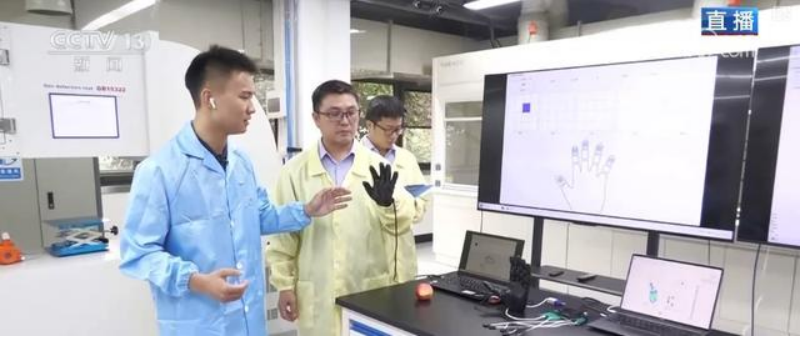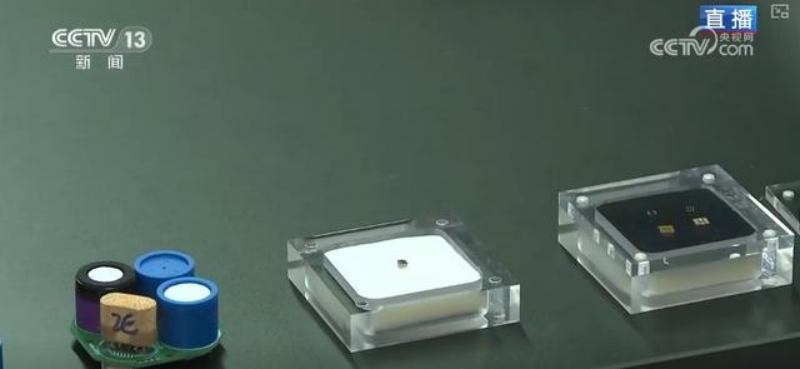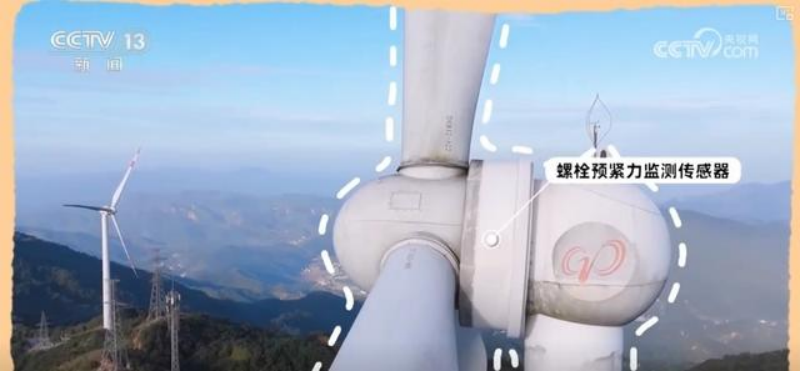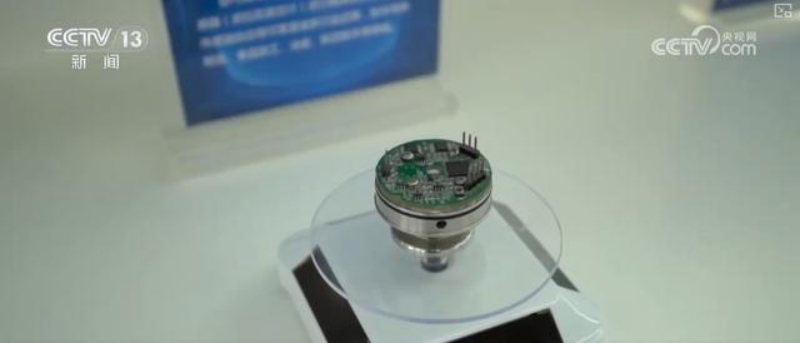CCTV News: In Zhengzhou, the sensor industry is in a period of rapid development. In just three years, the number of related enterprises has doubled to 3000.
Entering the laboratory and experiencing the touch of 'electronic skin'
In a smart sensor research and development laboratory in Zhengzhou, various new sensor samples will undergo performance tests to verify their operational stability.

Now, by my side, the researcher is wearing a new sample - a black film that is similar in size and shape to a human palm, resembling an "enlarged" version of a chip, but can be freely bent and tightly adhered to the surface of a human hand. In fact, this is a flexible pressure sensor, also known as an "electronic skin" by the staff.
It is not only as soft as skin, but also able to accurately feel and record changes in external pressure. You see, by using it to grab some items, the magnitude of the contact pressure can be converted into numerical values for display. In addition to grasping movements, even slight touches such as caressing and wiping can be accurately captured by the "electronic skin".
How to achieve such precise perception? Upon closer inspection of its surface, the "small black dots" on top are the sensing points for collecting signals. Each square centimeter integrates about 100 sensing points, which are like tactile sensors on the surface of our skin, responding in real-time with a response speed of about 1 millisecond to reflect changes in external pressure, simulating the "delicate" and "sensitive" tactile sensation of human skin.
Wearing smart insoles to feel the future sports' companion '
What role can such high-precision and bendable sensors play in our daily lives? This insole is equipped with such sensors. Wearing it while standing or walking slowly forward, it can collect real-time plantar pressure distribution data under different postures. Through computer analysis, it can help people correct incorrect standing and walking postures, and even further analyze the center of gravity, stability, and symmetry of each step, providing more accurate data support for adjusting body posture.
Upgrade from hard to soft manufacturing from big to small, and upgrade to "smart manufacturing"
The latest developed flexible sensor can be integrated into thin insoles, but what did the previous sensor look like? These are products from over a decade ago, when the core components of sensors were large in size, low in accuracy, and even mostly imported from abroad, making them easily replaceable in the market.

Now, through continuous investment in research and development, and polishing of core technologies, sensors can not only achieve extremely small sizes, but also integrate two different sensing functions within the volume of rice grains. More than 3000 upstream and downstream related enterprises are already distributed in the high-tech zone, and tens of thousands of intelligent sensors are sent from here to the world every day.
From large to small components, the development of sensors not only makes people's lives more convenient, but also makes industrial production more efficient and safe. What are the other application areas of sensors? What kind of research and development model is behind the increasingly intelligent development?
At the Huihuishan Wind Power Plant in Dengfeng City, Zhengzhou, these wind turbines are operating normally. Despite only rotating 14 times per minute, they can generate 2000 degrees of electricity per hour. What is behind the safe operation?

Voiceprint sensor keeps the blade tip and tower at a safe distance. Bolt pre tightening force monitoring sensor, detecting whether the bolt is loose. Laser wind radar predicts wind direction and speed and provides early warning.

Fang Xin, assistant director of Zhengzhou Zhongke Integrated Circuit Research Institute, introduced that their developed "Wind Catcher" laser wind radar is more timely and efficient than traditional wind measurement. It can improve power generation efficiency by 3% to 5%, and each wind turbine can increase revenue by millions per year. Now they are collaborating with enterprises, universities, and other research institutes to develop more sensor products that meet market demand in chip design.
Focus on the four key links of research and development, design, manufacturing, packaging and testing, and materials and equipment in the intelligent sensor industry. On the basis of maintaining the traditional advantageous position of gas sensors, Henan Province has invested more than 2 billion yuan to establish the Mozi Laboratory Micro Nano Electronic Platform, and the Zhongyuan Quantum Valley Innovation Base has also started construction, in order to further improve the design and production capacity of chips and help the sensor industry transform and develop towards high-end manufacturing.
Henan fully leverages the role of high-level platforms such as intelligent sensor MEMS R&D service platform, Mozi laboratory, integrated circuit public R&D platform, and integrated circuit pilot platform as the "vanguard". We are guiding innovative resource advantage units to provide pilot testing and secondary development services for research and development achievements to more universities, research institutes, and related enterprises, continuously transforming the scientific and technological advantages of Henan's intelligent sensors and semiconductor industry chain into product advantages and benefit advantages.
Source: CCTV Network



